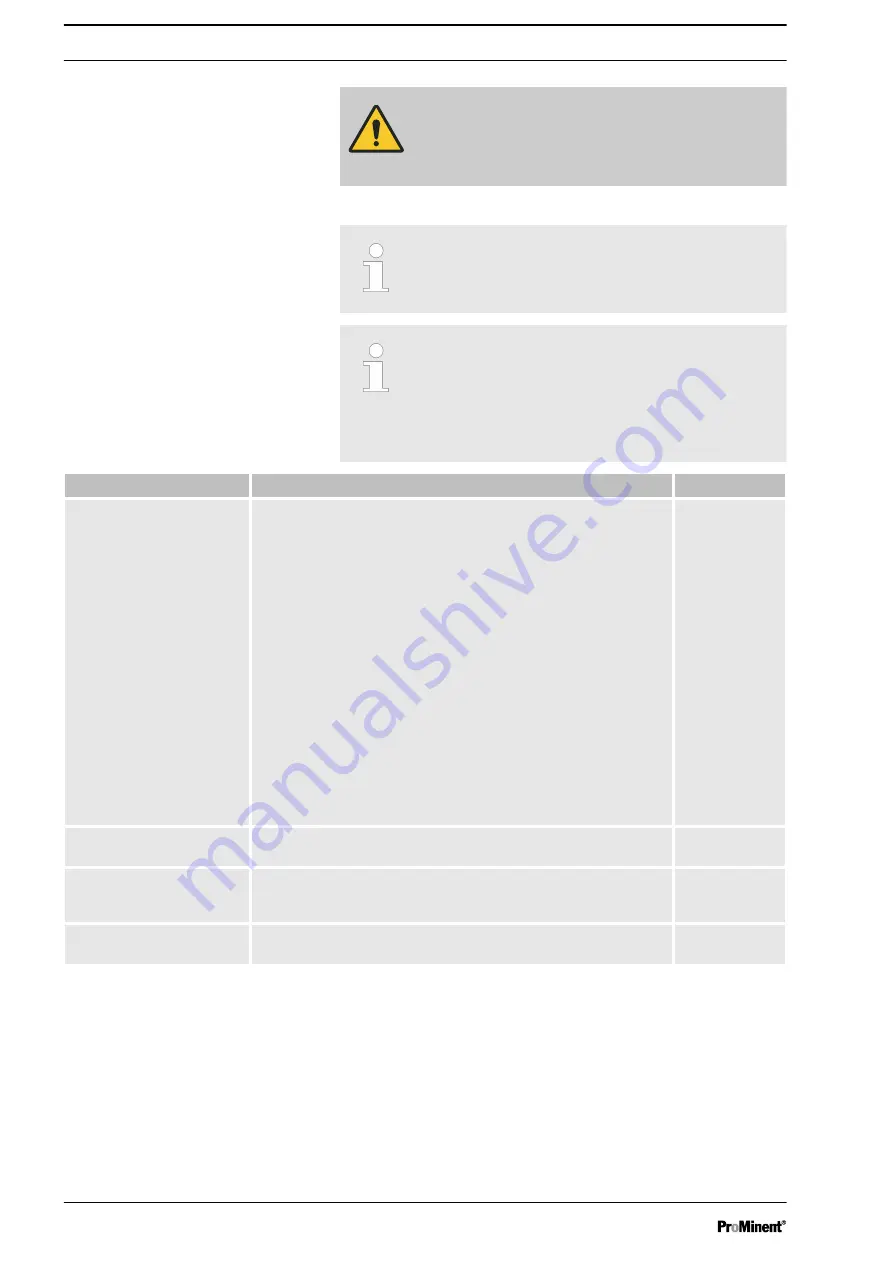
WARNING!
In the area at risk from explosion: stop the pump imme‐
diately and rectify these anomalies. ProMinent Service
may be needed if required.
Under heavy loading (e.g. continuous operation) shorter
maintenance intervals are recommended than those
given.
Third-party spare parts for the pumps may result in prob‐
lems when pumping.
–
Only use original spare parts.
–
Use the correct spare parts kits. In the event of
doubt, refer to the exploded views and ordering
information in the appendix.
Interval
Maintenance work
Personnel
Quarterly*
n
Check that the metering lines are tight at the liquid end and
check for leak-tightness.
n
Check that the suction valve and discharge valve are firmly fixed
in place and tightly sealed.
n
Check the leak-tightness of the entire liquid end - particularly
around the leakage hole!
With critical applications, check or replace the diaphragm at reg‐
ular intervals - see
„Check the condition of the metering dia‐
.
n
Check that the dosing head screws are tight.
n
Check that the diaphragm rupture sensor is firmly seated.
n
Check whether the diaphragm rupture sensor stops the pump or
generates an alarm after it has been triggered.
n
Check that the flow is correct: Allow the pump to prime briefly.
Observe the maximum permissible operating pressure!
n
Check that the electrical connectors are intact.
n
Check the tight, clean electrical connection of the earthing wires.
n
Check the tight, clean electrical connection of the potential
equalisation wires.
Technical per‐
sonnel
After approx. 4,000 operating
hours
Check the gear ring/DZ element of the coupling as per their oper‐
ating instructions.
Technical per‐
sonnel
After 18,000 operating hours
or 23,500 operating hours
(API)
Adhere to the motor manufacturer's recommendations - see oper‐
ating instructions for the motor.
After 40,000 h: The pump bearing must be replaced every 40,000
hours for ongoing ATEX use.
* Under normal loading (approx. 30% of continuous operation).
Under heavy loading (e.g. continuous operation, aggressive feed chemi‐
cals etc.): shorter intervals.
The diaphragm is a wearing part, the service life of which is dependent on
the following parameters:
n
System back pressure
n
Operating temperature
n
Feed chemical properties
Standard liquid ends:
Check the condition of the metering dia‐
phragm
Maintenance
46






























